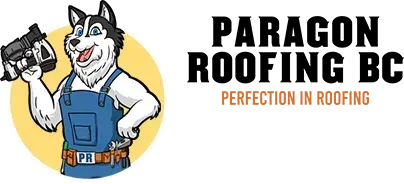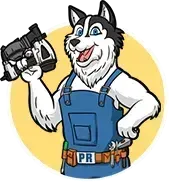
Flat Roofing in Burnaby – Torch-On, TPO, and EPDM Solutions
PARAGON ROOFING BC
Perfection In Roofing.
Building Roofs That Last.
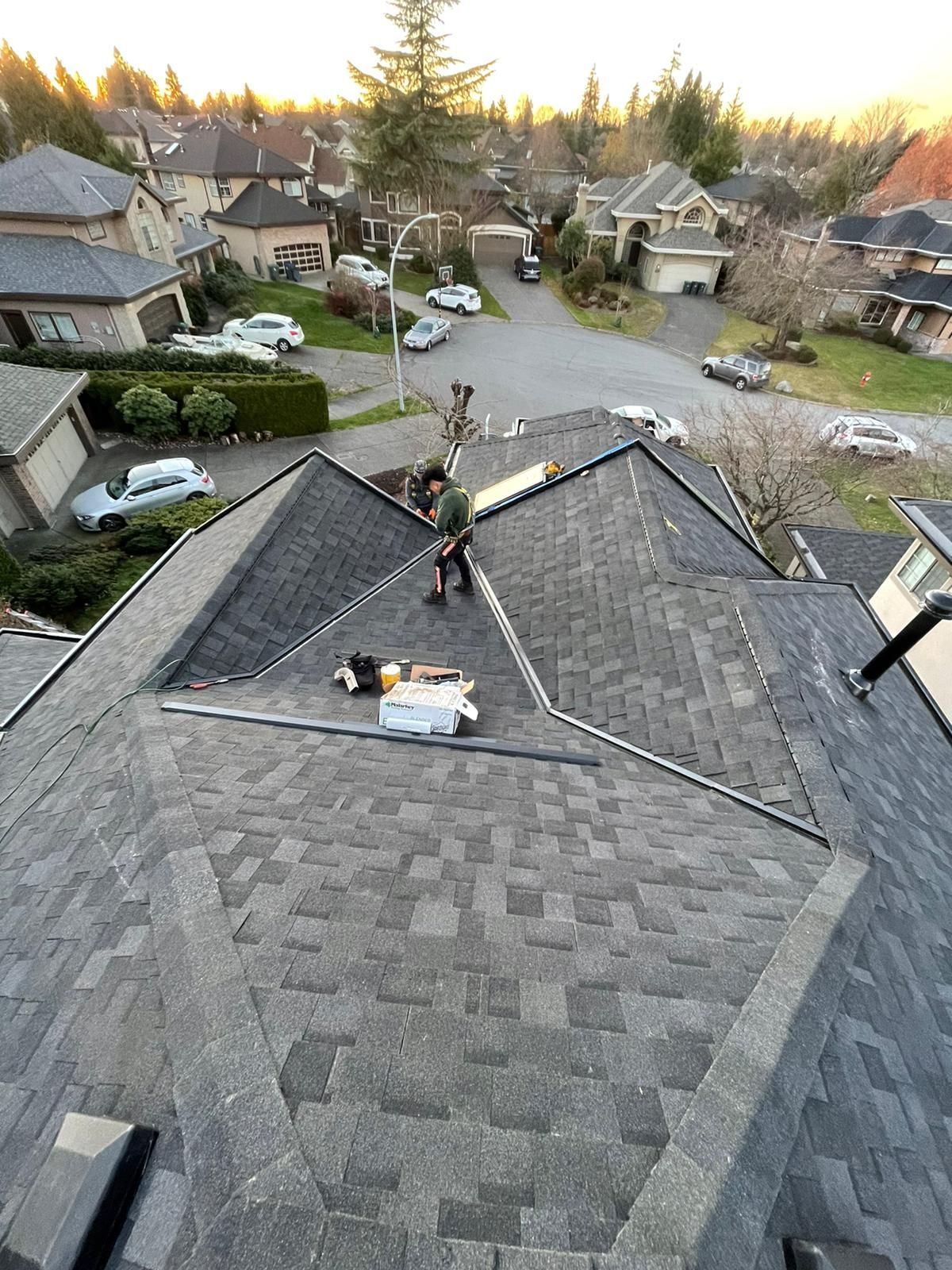
Flat Roof Challenges in Burnaby’s Rainy Climate
Ponding water risks
On low-slope roofs, standing water is the silent roof killer. It
intensifies UV, cools membranes at night (promoting
alligatoring and splits), and exploits the tiniest gaps at
laps, HVAC curbs, skylights, and parapets. Left for days, ponding accelerates aging, invites algae, and can overload the deck after back-to-back storms.
Drainage and slope matter—more than the membrane
Even the best torch-on, TPO, or EPDM will struggle if the roof can’t move water off fast. In Burnaby, aim for
positive drainage within 24–48 hours:
- Design ¼ in./ft (≈2%) slope with tapered insulation, crickets, and saddles behind curbs and along long parapets.
- Keep primary drains clear and protected, add scuppers and overflow drains so one clog doesn’t become a swimming pool.
- Get the edges right—secure metal edges, tight term bars, and shingle-fashion laps so wind-driven rain can’t backwash under the sheet.
Moisture and insulation challenges
Coastal humidity and long wet spells punish insulation.
Wet polyiso loses R-value quickly; trapped moisture blisters membranes and corrodes fasteners. Durable Burnaby assemblies typically include:
- A high-density cover board for impact resistance and stable adhesion.
- A project-specific vapor control layer (restaurants, pools, clinics often need an upgraded retarder).
- Smart insulation choices: polyiso kept dry by design; EPS/XPS where intermittent wetting is likely; and tapered layouts that steer water away from dead zones.
- Curb/penetration detailing built to spec—ditch makeshift pitch pans and use proper welded or torch-on flashings.
Bottom line: On Burnaby flats, the winners aren’t just membranes—they’re the drainage plan, tapered design, vapor strategy, and curb/edge details that keep the system dry, season after season.
Reach Out Today!
Paragon Burnaby #1
We will get back to you as soon as possible.
Please try again later.
PARAGON ROOFING BC - PERFECTION IN ROOFING
SBS membranes (why they’re a fit here)
Torch-on roofing uses
SBS (styrene-butadiene-styrene) modified bitumen—an elastic, weather-tough asphalt that stays flexible in Burnaby’s cool, wet winters. A typical build is a
2-ply system: a base sheet plus a
mineral-granule cap sheet. Seams are heat-welded into one continuous, watertight layer that excels around
parapets, curbs, skylights, and drains. Near combustible walls or tight details, we transition to
self-adhered/cold-applied sheets, then tie back into the torch field for a clean, warrantable assembly.
Lifespan & maintenance (realistic expectations)
With proper deck prep, a
tapered insulation plan for drainage, and a protective
cover board, quality SBS systems routinely deliver
20–25+ years in Metro Vancouver. Poor slope and chronic ponding can reduce that to
12–18 years—regardless of brand—so design matters. Keep yours on the long end with simple care:
- Spring/Fall inspections: check seams, terminations, flashings, and granule wear.
- Keep water moving: clear debris at drains/scuppers; add crickets/saddles where needed.
- Protect traffic paths: install walkway pads to prevent scuffs and punctures.
- Fix small issues early: localized torch or compatible cold repairs prevent spread.
- Optional refresh @ year 12–15: targeted repairs + liquid-applied coating (where appropriate) to stretch service life.
Ideal for residential and commercial use
SBS torch-on shines anywhere you need durable, detail-friendly waterproofing on low slopes:
- Residential: low-slope additions, over-living-space decks (with proper balcony assemblies), garages, carports, laneway homes.
- Strata/Multi-family: townhouse patios, amenity roofs, elevator/stairwell penthouses.
- Commercial/Industrial: warehouses, retail plazas, schools—especially roofs rich in penetrations and parapets.
We install to
RCABC-compliant standards, use
TorchSafe practices (fire watches, cold-applied transitions at combustibles), and specify the right slope package so your roof stays dry through Burnaby’s heaviest rain. If you’re weighing options for a flat or low-slope project, torch-on is the reliable, repairable workhorse that’s built for our climate.
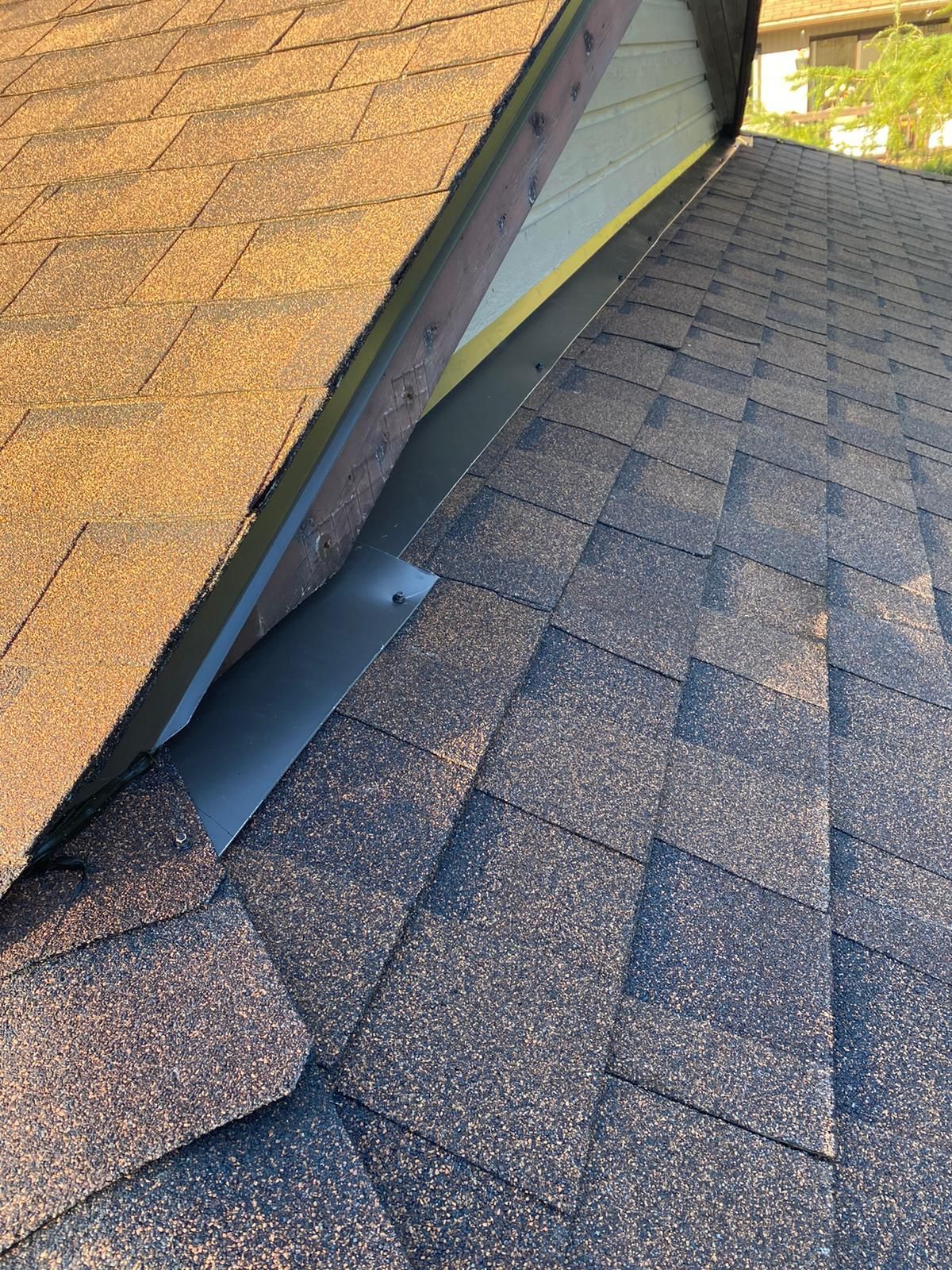
TPO and EPDM Flat Roof Options in Burnaby
Flat roofs in Burnaby have to beat heavy rain, winter wind, and year-round moisture. Two proven single-ply systems do that well—TPO and EPDM—and each shines for different reasons. Here’s the plain-English breakdown so you can pick what fits your building, budget, and energy goals.
TPO (thermoplastic polyolefin) — energy-savvy and weldable
- High reflectivity = cooler summers. Bright-white TPO bounces solar heat, helping trim cooling loads on top-floor spaces and reducing heat-island impact on sunny sites.
- Hot-air welded seams. Seams are heat-fused into a monolithic sheet—fast, clean, and reliable when installed by trained crews.
- Good chemical resistance (general). Handles typical rooftop exposure; confirm if you have kitchen grease or industrial exhaust—those need special detailing.
- Burnaby realities: Add a cover board for hail/foot-traffic toughness and specify walkway pads to mechanical units. Pair with tapered insulation for drainage—TPO dislikes long-term ponding as much as any membrane.
- Lifespan: 15–25+ years with good design (slope), quality sheet, and routine maintenance.
EPDM (ethylene propylene diene monomer) — long-life workhorse
- Outstanding longevity. Thick, fully adhered EPDM has a long track record; 20–30+ years is common with proper slope and upkeep.
- Puncture tolerant & flexible. The rubbery sheet stays pliable in cold, bends around odd shapes, and fares well under foot traffic when you add pads.
- Cost-effective. Especially on large, simple roofs where speed and material efficiency matter.
- Seam tech. Modern primer + seam tapes are robust when installed correctly; edge terminations matter—use proven details and a cover board for durability.
- Colour note. Standard EPDM is black (absorbs heat). That’s fine in our heating-leaning climate or shaded sites; white EPDM or a reflective coating can be specified if summer heat is a concern.
TPO vs. EPDM — which should you choose?
- Want the coolest surface (reflectivity)? Go TPO (white) or white EPDM; both reduce rooftop temperatures on sunny exposures.
- Chasing maximum service life with low fuss? Thick, fully adhered EPDM has the edge in long-term durability and simplicity.
- Complex geometry, lots of penetrations? EPDM is forgiving; TPO works too with the right accessories—either way, add a cover board and detail carefully.
- Restaurants/grease exhaust nearby? Vet chemistry first. Some TPOs dislike fats/oils; EPDM with proper protection can be a safer bet.
- Budget vs. performance: Both are cost-effective single-ply choices. On many Burnaby projects, EPDM wins on lifecycle value; TPO wins on energy and aesthetics (bright white).
No matter the membrane: Burnaby’s rain rewards tapered insulation for drainage, solid deck prep, RCABC-compliant flashings, and a clear maintenance plan (seasonal inspections, drain cleaning, walkway pads).
Curious which system makes sense for your roof, right now? Call
Paragon Roofing BC for an on-site assessment and a side-by-side proposal tailored to your roof’s slope, traffic, and budget.

Flat Roof Drainage and Slope Packages
in Burnaby
Burnaby’s rain doesn’t forgive flat roofs that are truly flat. The fix is deliberate positive slope to well-placed drains—so water leaves the roof quickly instead of lingering, stressing seams and shortening the membrane’s life. Here’s how we design, build, and verify drainage that works in real storms.
Custom slope builds (tailored to your roof, not a template)
- Tapered insulation systems. We lay out a CAD plan (panels, pitches, crickets, sumps) to create predictable fall—typically targeting ~2% (≈ 1/4:12) toward drains and scuppers. This is the cleanest way to add slope during a reroof without reframing.
- Crickets, saddles, and sumps. We form water highways behind parapets, between units, and upslope of skylights/curbs—plus localized sump pockets at drains to speed draw-down.
- Selective reframing/planing. Where structures allow, we correct chronic birdbaths by shaving high spots or adding tapered sleepers—especially at old deck transitions.
- Door/threshold & curb coordination. Slope plans include threshold raises (where needed) and curb extensions so we preserve required flashing heights while still moving water.
- Verified build-out. We mark slopes on the deck, stage tapered bundles by zone, and photo-document each layer for your records.
Roof drain installation (move water fast—and safely)
- Primary drains at low points. New cast or coated drains with clamping rings (not just sealant), strainers, and sump pans integrate with the membrane for a watertight, serviceable connection.
- Overflow protection. Overflow scuppers or secondary drains prevent interior flooding if primaries ever clog. We size and locate them per roof area and edge conditions.
- Heat-trace options. In cold snaps, heat cable at bowls, scuppers, and conductor heads helps prevent freeze-thaw blockages.
- Plumbing tie-ins done right. We coordinate with plumbing to ensure proper leaders, strainers, and cleanouts—no bottlenecks downstream of a perfect roof layout.
- Hardware that lasts. Stainless/AL components and compatible fasteners to keep galvanic corrosion out of your water path.
Preventing ponding water (design + build + upkeep)
- Positive slope everywhere. Our default is continuous fall to drains/scuppers; we eliminate dead-level pockets with tapered fills or added drains.
- More drains, smarter spacing. Large or chopped-up roofs often need additional drains so no point is too far from relief.
- Raise what’s in the way. We lift and re-flash RTU curbs, sleepers, and cable trays so slope is uninterrupted and flashing heights stay in spec.
- Protect high-traffic zones. Walkway pads prevent compression dents that make new birdbaths around service access paths.
- Maintenance plan. Seasonal clearing of leaves from drains and gutters keeps a great slope plan performing like day one.
Quality assurance & testing (so you’re not guessing)
- Laser/level checks during install to confirm falls before the membrane is closed.
- Targeted water tests at crickets and sumps after detailing.
- Optional Electronic Leak Detection (EFVM) post-install for sensitive buildings.
- Close-out package with slope drawings, drain locations, product data, and photo log.
Have chronic ponding or interior leaks after big storms? We’ll map the roof, design a tapered package, and add/relocate drains so water has no reason to linger.
Call Paragon Roofing BC for flat-roof drainage and slope design in Burnaby—let’s make your roof shed water the way it should.
When a flat roof leaks in Burnaby, it’s rarely a single “hole”—it’s a small chain of issues made worse by weeks of rain. Our approach is methodical, membrane-specific, and built for our coastal climate.
Leak detection and patching (done the right way)
- Targeted diagnostics, not guesswork. We trace water paths with a mix of infrared scans (evening/dawn), moisture probing, selective core cuts, and—when appropriate—electronic leak detection (EFVM) or controlled flood tests. We also check the usual suspects: drains, seams, parapet caps, skylight curbs, and penetrations.
- Membrane-specific repairs.
- SBS torch-on: clean, prime, and install a two-ply torch patch with rounded corners and 100 mm+ laps; reinforce at fishmouths and side laps. Hot-works best practices and on-site fire watch are non-negotiable.
- TPO/PVC: clean and hot-air weld manufacturer-matched patches; probe seams after cooling and heat-seal any holidays.
- EPDM: solvent clean, primer + tape patch or cured EPDM patch with proper roller pressure; terminate with lap sealant.
- Detail fixes that actually hold. Reset or replace clamping rings, rebuild sump pockets at drains, add pourable seals at irregular penetrations, and install termination bars where needed. We finish with a water test so you aren’t left wondering.
Need urgent help? We offer same-day tarping and temporary tie-ins during storms, then return for a permanent repair once the weather breaks. (See Burnaby Roof Repair.)
Annual inspections (small visits that prevent big bills)
- Pre-winter check (Oct/Nov): clear debris, verify positive slope to every drain, tighten/replace loose strainers, inspect parapet caps, seams, and penetrations, and reset walkway pads that telegraph new low spots.
- Post-storm / spring check (Mar/Apr): look for blisters, open laps, ponding imprints, UV-stressed sealant, and fastener back-out on accessories.
- Photo & report. Every visit includes a concise report with annotated photos, priorities (urgent / soon / monitor), and a simple budget plan so you can act before the next atmospheric river arrives.
Preventing costly damage (what we do beyond the patch)
- Keep water moving. Add or relocate drains/overflow scuppers, install tapered crickets behind units and along parapets, and correct chronic birdbaths with tapered insulation—so water can’t sit and cook seams.
- Protect high-traffic zones. Install walkway pads to stop compression dents near mechanicals and service routes; dents become birdbaths that become leaks.
- Upgrade weak details. Raise low curb flashings, replace brittle pitch-pans with pourable seals, and swap failing mastic for proper membrane-based detailing.
- Plan the maintenance. A light, scheduled roof tune-up (twice a year) is dramatically cheaper than one emergency call. We keep a running service log for insurance and warranty files.
Looking to stop leaks before they start? Book a flat-roof tune-up, and we’ll combine cleaning, minor fixes, and a written condition report into one visit—tailored to Burnaby’s rainy season.
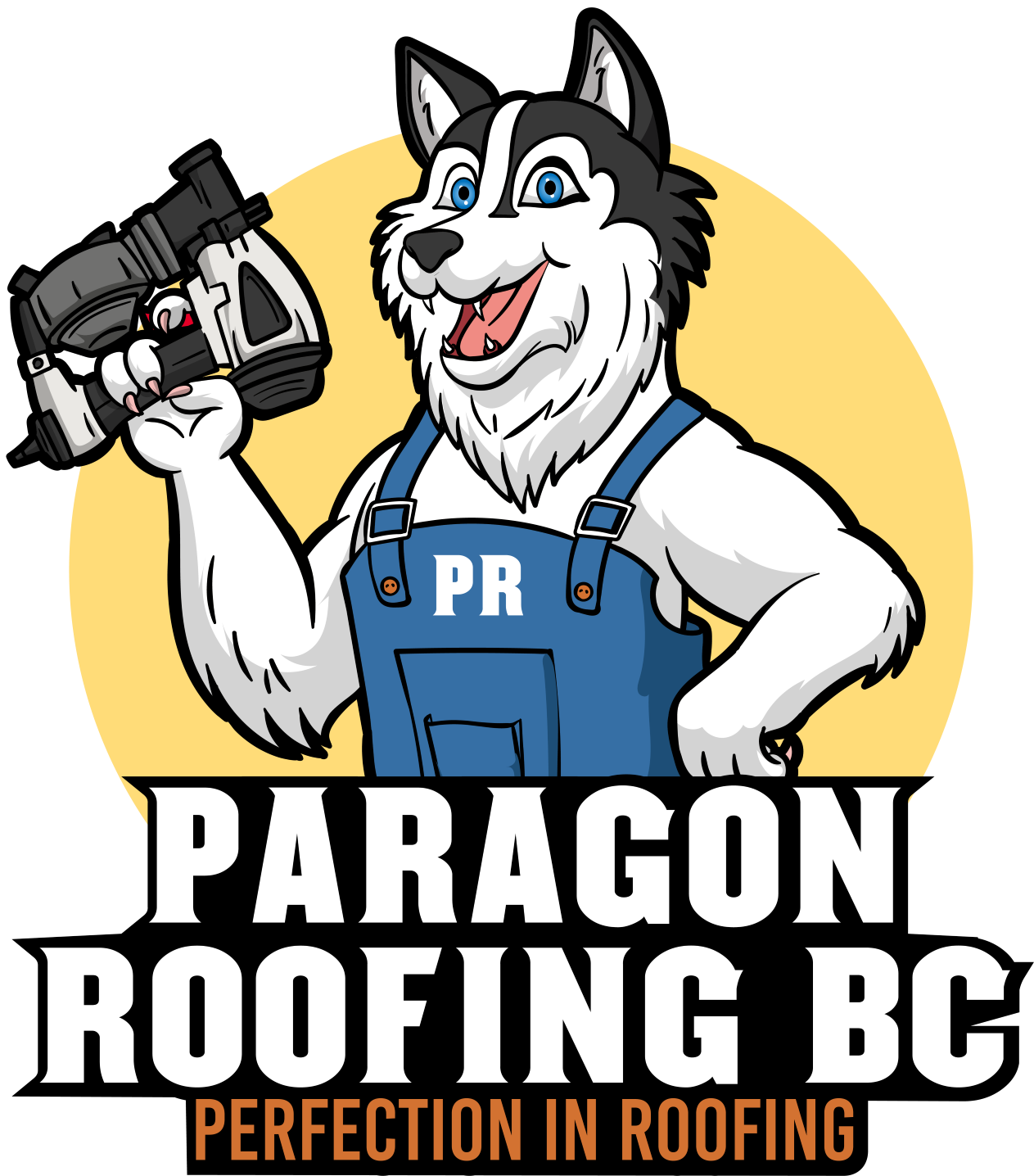
Frequently Asked Questions.
Roofing is an investment into your property. Here are some FAQs to help navigate making that choice.
Do you install and repair skylights, sun tunnels, gutters, soffits, downpipes, ventilation, or chimneys?
YES! At Paragon Roofing BC, we offer all roofing repairs and installs for skylights, sun tunnels, and various roof windows. We install and repair downspouts, gutters, soffits, scuppers, and more because proper drainage is key for a healthy roofing system. Roof penetrations – also known as protrusions - such as chimneys or vents are included in our roofing repair and install services.
Does your roofing company have proper liability insurance and Work Safe BC coverage?
Yes, we maintain current liability insurance and WorkSafeBC coverage because safety isn’t an option, it’s the only way to do business. Our clients and company employees are covered if there be an accident, accidental damage or unforeseen issues on the job site.
How long will it take to reroof my house or building?
All of our reroofing services will require a different timeline, varying on the size of your roof, weather conditions, and the scope of the project. What we can guarantee is your comfort throughout the roof install service and our transparent communication.
Why are vents so important for my roof?
Vent installation is very important for any roof. It provides moisture control so condensation and water don’t cause wood rot, mold, or damage to the attic and roofs insulation. Ventilation allows for consistent temperatures in your attic, prevent ice dams, and improve the lifespan of your roof and shingles. Installing ventilation is a must have to uphold the manufacturers warranty.
How should I prepare for the installation of my new roof?
During our roof installs, hammering can cause vibrations and shake loose items off shelves and walls so, we recommend removing loose valuables until we’re done. We kindly ask that you clear your driveway and a parameter around your home to make room for new materials and the dumpster. To best reduce the risk of damage from falling debris during the roof tear off, please move anything you don’t want accidentally damaged.
If my roof leaks, do I have to completely replace it?
Small roof leaks will be a simple fix, while pest, bird, and critter damage causing a leaky roof could require a more extensive leak repair service. Simply put, no, just because you have a roof leak, doesn’t mean it needs to be fully replaced.
Moss is growing on my roof, is that an issue?
Burnaby’s close proximity to the ocean causes it to be a moist area where moss, algae, and vegetation will grow on rooftops. If left unmaintained it will develop into a big problem and an even bigger headache. Moss will divert water effectively ruining the optimal water flow designed within the roof system. Discolouration, moisture build-up, lifting and separated shingles are common long-term side effects of moss growth on your roof.
Here's What Our Existing Clients Think.
Home and business owners we've served across the greater Vancouver area.
Our Google Reviews
Edit Google Reviews Widget
We look forward to helping you.
For all your roofing needs, give us a call, text, or email. 604-358-3436
Paragon Burnaby #2
We will get back to you as soon as possible.
Please try again later.
Learn More About Roofing in Burnaby
- How coastal winds impact Burnaby roofs—and how to protect yours
- Why roof ventilation matters in Burnaby’s wet weather
- How to prepare your Burnaby roof for winter storms and hail
- Top durable roofing options for older homes in Burnaby
- How often should you inspect your roof in Burnaby?
- Asphalt shingles vs. metal roofing in Burnaby: What to know
- Best roofing materials for Burnaby homes: Asphalt, metal, or tile?
- How rain and snow affect Burnaby roofs all year long
